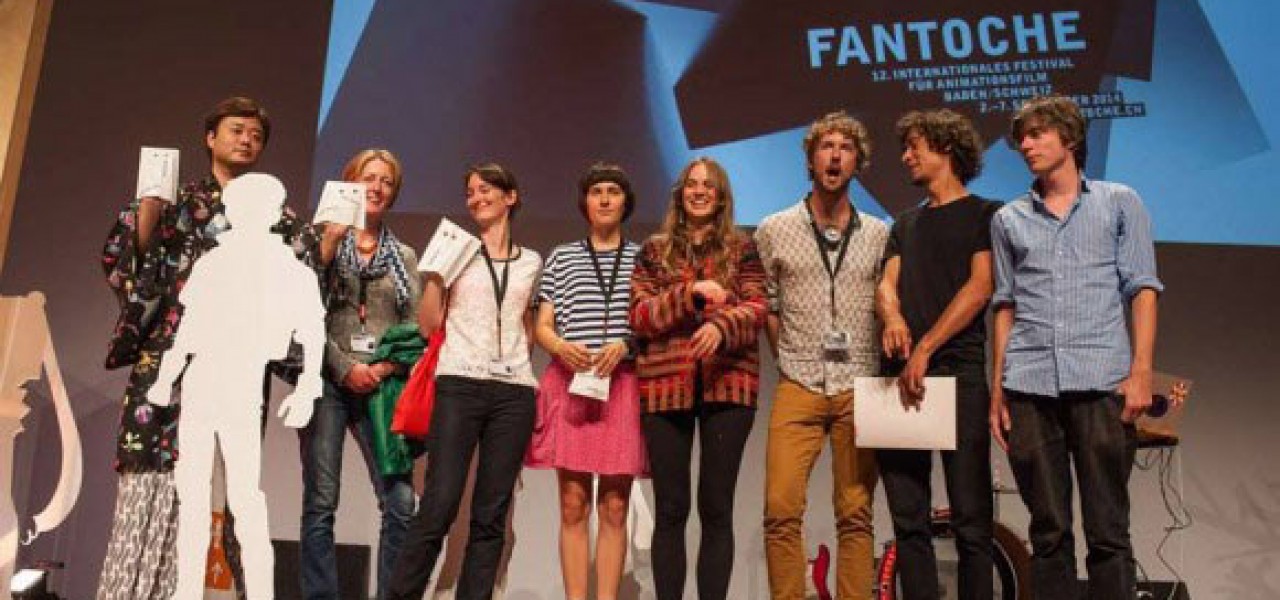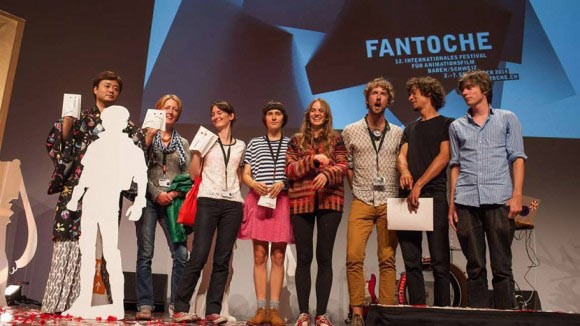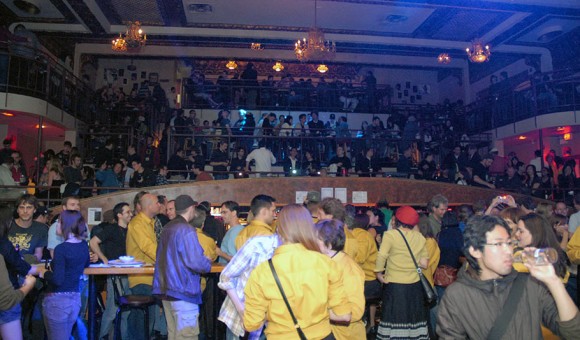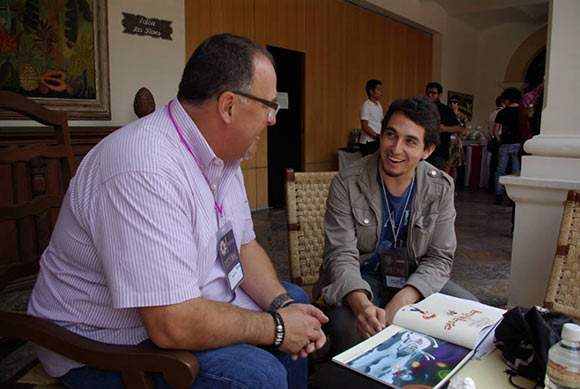

11 Ways Animation Festivals Can Support Filmmakers
Animators: You’ve heard of them, but may never have seen them in the flesh. They live in sunless rooms or basements, spending long hours either staring at a glowing screen or moving things at ridiculously small intervals. Rumored recluses, animators reportedly don’t like other people and are hard to spot in the wild.
Some of this may be true, but if you know where to look, you can find them rather easily. Animation festivals are one place where they tend to congregate, and contrary to the stereotype, animators can be just as social and fun-loving as regular people.
I am one such animator, and have attended many animation festivals with my short films over the past five years. Here are a few tips for festivals to most effectively attract these reclusive animators, and ensure that they keep coming back:
1) Have a home-stay program.
Attending film festivals costs money and time. A home-stay program is a great way to save guests some of both, while connecting the festival with the local community. My first experience with a home-stay program was at DOK Leipzig in November 2014. I stayed at a nice couples’ apartment about an eight-minute tram ride from the center. It was a great opportunity to get out of the festival bubble, see a bit of the city outside of the main drag, and actually meet locals who live there and are interested in film. The hosts get some free tickets in exchange for their hospitality, and the festival offers housing to animators without having to shell out for hotel rooms.
2) Respect attending filmmakers by acknowledging them.
Contrary to stereotype, I actually like being put on the spot after a screening to answer questions from the audience. DOK Leipzig did this very well. They offered Q&As after each screening, and had an additional “Meet the Animators” event at a set time every day during the festival. Now, I understand that not every festival may be able to do a Q&A; if that’s the case, then at least acknowledge animators in the audience before screenings by asking them to stand. This lets the audience see their faces should they have questions afterwards and it allows other filmmakers in the audience to see who else is at the festival. This is especially important if the festival does not have any other networking events and doesn’t do Q&As. Last year, I was at an animation festival in England that didn’t have any. As a result, it took me the whole week to realize that I was only one of two attending filmmakers—and the other had come all the way from South Korea! And the festival didn’t even let the audience know that he was there.

3) Meal vouchers for local eateries.
The Animateka Festival in Ljubljana hands every attending filmmaker a packet of meal tickets as well as a map with locations of restaurants where they can be used. It’s a great excuse to try local food, and it’s nice if a few vegetarian and vegan places are included so those with dietary needs know immediately where they can eat without having to ask. It also involves local restaurants with the festival, and of course it saves animators money. At Animateka, we soon became regulars at a place across from the main cinema. Note: festivals shouldn’t give meal tickets to some animators and not to others. This can cause tremendous awkwardness at the dinner table when it’s time to pay — and some realize they didn’t rate highly enough to be granted meal tickets.
4) Offer travel assistance.
It’s rarer than a snowball in hell to find an animation festival that offers to pay for part of a filmmaker’s travel costs — but some do, such as the non-animation specific Cucalorus Film Festival in Wilmington, North Carolina. When I flew in from the other side of the country in 2012, they gave me a travel voucher that covered over half of my plane ticket, which made me feel like they really wanted me there. Indeed, when I arrived, I realized the result of this tactic: attending filmmakers from all over the world, from Brazil and Israel to Germany and Canada. With so many interesting people to meet and network with, it made for epic parties. I think Cucalorus affords it by launching a Kickstarter every year just to pay for the travel fund, but it’s worth it because I recommend this festival to every filmmaker I meet.
5) Be honest about what filmmakers can expect.
Last year, a Spanish festival (which shall not be named) accepted one of my short films. I wasn’t too familiar with it, but the website seemed professional and the previous editions looked good. Yet it wasn’t clear what the experience might be, so I asked about other attending filmmakers and networking events. Now, I may be pretty social for an animator, but I still need some type of opportunity to do so. “Of course,” they said, so I went — and quickly realized that while there may have been other filmmakers there, I had no chance of meeting them. The festival lounge in the hotel lobby never seemed busy, and there were no scheduled networking events except for the closing night party. They did offer some events outside of screenings, like panel discussions, but they were all conducted in Spanish. In addition, when I tried to eat at a restaurant around the corner, I realized everyone else had been given meal tickets, except me — perhaps because the festival mainly screened features while mine was a short. In any case, the place was a bit out of my price range, so I couldn’t eat there anyway. Needless to say, I didn’t end up meeting any filmmakers and felt the whole trip was kind of a bust. I wish the festival had told me it was geared mostly towards the Spanish feature film industry.

6. Smart festival badges.
Make them big, color-coded, with descriptors. I’m at festivals mainly to meet other animators, but also producers, programmers, distributors, and live-action filmmakers. In other words, people across my industry. I also like meeting animation fans and students, but it’s not specifically why I made the journey. I only have so much “social” in me, so I must use it wisely. Which is why it’s frustrating to arrive at a festival only to find that everyone has a small badge of the same color with just a name and nothing identifying whether they are students, fans, or filmmakers. These things should be evident at a glance.
7) Be clear about subtitles.
This should be obvious for any festival showing international films, or offering panels and lectures with international guests. One festival I attended seemed to have the right idea: a special printed schedule that only included films either in English or with English subtitles. Trouble is, I attended one of those international films and it started…with no subtitles. When I found someone from the festival to ask about it, she was less than illuminating. After that, I asked before each screening, but volunteers still never knew for sure whether the films would have subtitles, which made for a stressful experience.
8) Airport pickup!
Even if festivals can’t afford travel assistance or accommodations, or don’t have a home-stay program, they can at least arrange drivers to pick up filmmakers who’ve made the trip — especially those who don’t speak the local language. It’s a great way for guests to touch base with their drivers about where the festival office is, or where they can pick up their festival packs, as well as a nice way for more reclusive animators to (at least) be forced to meet the others getting picked up at the same time.

9. Don’t hide your submission deadlines and dates.
Place them clearly on the front of your festival website! I submit to over 400 festivals a year. I have a spreadsheet that I sort by deadline, which I must regularly update. To do so, I check your festival’s website, and there is nothing more annoying than spending much unnecessary time reading through your fine print just to find your submission deadline. I found one festival that didn’t include dates anywhere on its site; I had to watch its trailer — to the the end– just to find out! Put it on the front page. In bold.
10. Give feedback.
Festivals often ask me to pay a submission fee for the privilege of having my film judged and potentially shown. When it’s rejected, I’d like to hear what the programmers thought, because that helps me understand if my work is what they’re looking for, and whether I should keep submitting or cross it off my list. This is especially important if a festival has a particular type of animation or experimental film in mind, although they might not like to admit it. Some do give feedback, like the Austin Film Festival, SXSW, and the Cleveland International Film Festival. If they are able to access their databases and copy-and-paste programmer comments into a helpful email, why can’t all of them?
11. Don’t make me mail you a DVD.
Today there are so many festival submission websites — with the best, in my experience, being FilmFreeway.com — that there is zero excuse to make a filmmaker buy and burn a DVD, place it in a specially purchased bubble envelope, walk to the post office, and pay international postage. As a frequent festival submitter, I seriously consider not submitting to a festival if they require a mailed DVD. It’s the 21st century—the Internet can handle it.
Tess Martin is an independent animator who works with cut-outs, ink, paint, sand or objects. Her most recent award-winning films are The Lost Mariner, an animated interpretation of an Oliver Sacks case study, and Mario, a paint on glass film based on an Italian folk song. Her films have displayed at galleries and festivals worldwide. She curates touring programs of films from Seattle and the Northwest and runs a monthly animation event in Rotterdam, the Netherlands.
